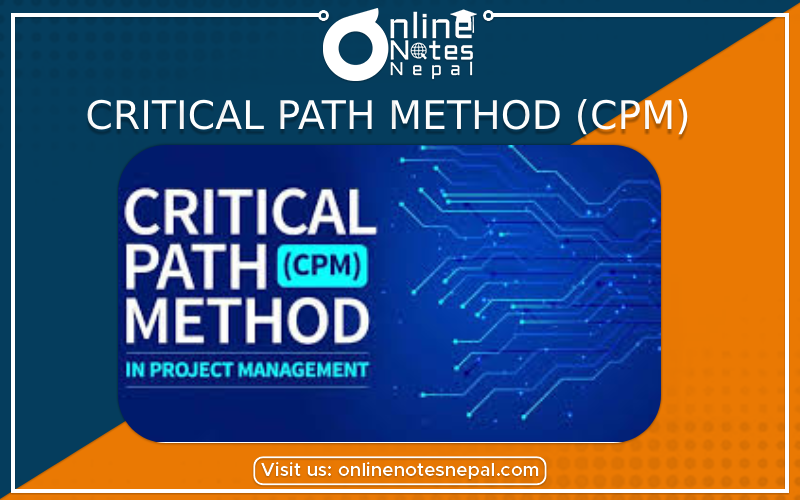Published by: Dikshya
Published date: 25 Jul 2023

The Critical Path Method (CPM) is a project management technique used to identify the most crucial tasks and determine the minimum time required to complete a project. CPM helps project managers to schedule, coordinate, and manage complex projects effectively. By analyzing task dependencies and durations, CPM helps to identify the critical path, which represents the longest sequence of tasks that determine the project's overall duration.
Key Steps in the Critical Path Method:
Task Identification: The first step in CPM is to identify all the tasks required to complete the project. Each task should have a clear start and end point and should be well-defined to avoid ambiguity during the analysis.
Task Sequencing: Once all the tasks are identified, the next step is to determine the sequence in which the tasks need to be performed. This involves understanding the dependencies between tasks, as some tasks may be dependent on the completion of others.
Activity Duration Estimation: In this step, the time required to complete each task is estimated. Accurate and realistic time estimates are crucial for the success of CPM as they directly impact the overall project duration.
Critical Path Identification: The critical path is the longest sequence of tasks that determines the shortest possible duration to complete the entire project. It is calculated by finding the tasks with zero float or slack time. Float time refers to the amount of time a task can be delayed without affecting the project's overall duration.
Float Calculation: After identifying the critical path, float time for non-critical tasks is calculated. Tasks with float time can be delayed without affecting the project's completion date. On the other hand, tasks with zero float time must be closely monitored and managed to avoid project delays.
Project Timeline and Scheduling: Using the critical path and float time information, a project timeline is created. This timeline includes the start and end dates for each task, ensuring that the project is completed within the desired timeframe.
Monitoring and Controlling: Once the project is underway, the progress of tasks is continually monitored. If any task on the critical path is delayed or completed ahead of time, it can impact the overall project schedule. Hence, it is essential to control and manage tasks effectively to stay on track.
Benefits of Critical Path Method (CPM):
Improved Project Planning: CPM provides a clear roadmap for project execution, making planning more efficient and reducing the risk of delays and oversights.
Resource Optimization: By identifying the critical path, project managers can allocate resources more effectively and prioritize tasks that have the most significant impact on the project's timeline.
Time Management: CPM allows project managers to identify potential delays early on, enabling them to take corrective actions to ensure projects are completed on time.
Better Communication: CPM provides a visual representation of the project schedule, facilitating effective communication among team members and stakeholders.
Risk Identification: CPM helps identify potential risks and bottlenecks in the project, allowing proactive risk management to mitigate potential problems.
Conclusion:
The Critical Path Method (CPM) is a powerful project management tool that aids in planning, scheduling, and controlling complex projects. By identifying the critical path and understanding task dependencies, project managers can make informed decisions to ensure successful project completion within the desired timeframe. CPM remains an indispensable technique for modern project managers seeking to achieve efficiency and effectiveness in their endeavors.